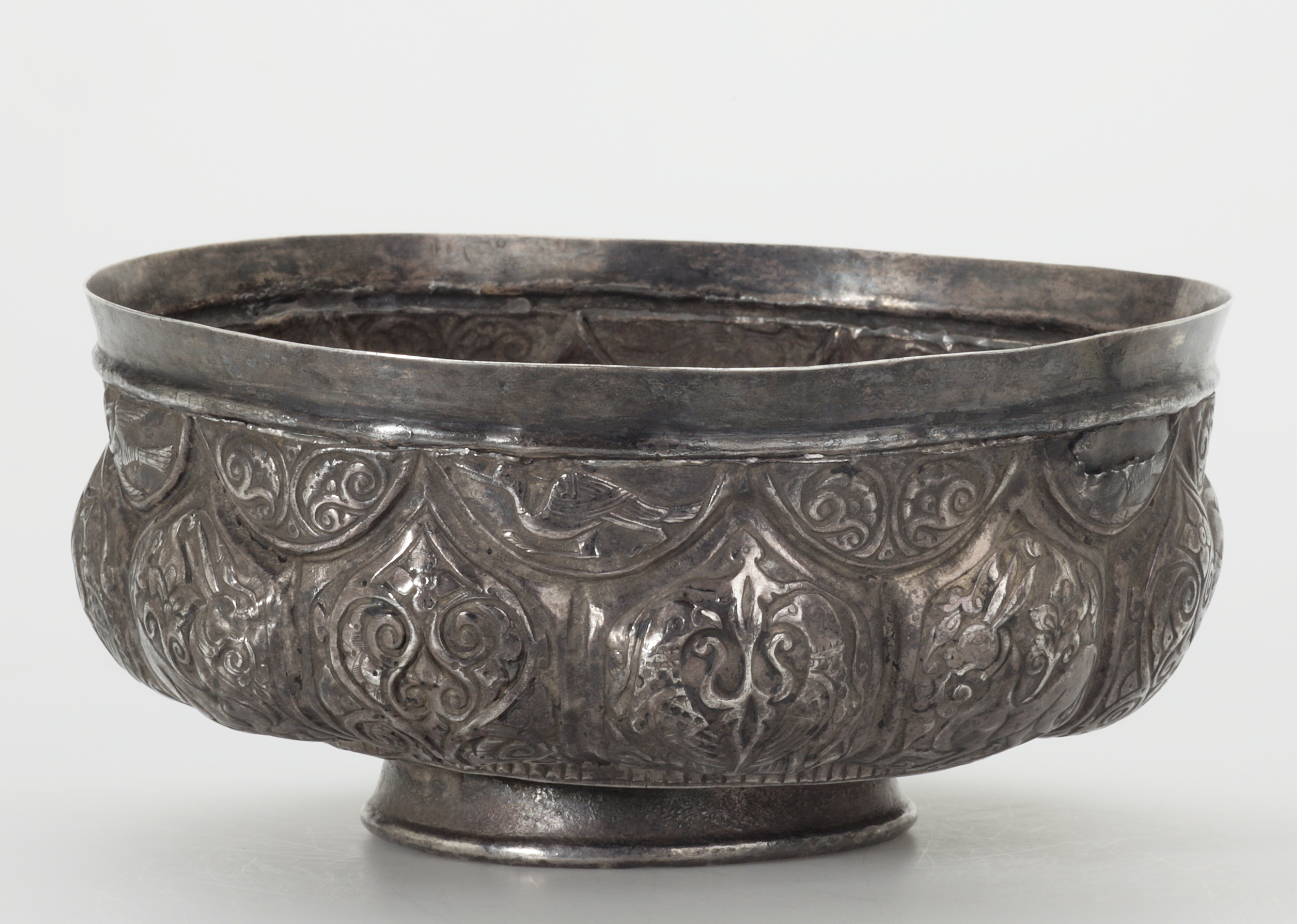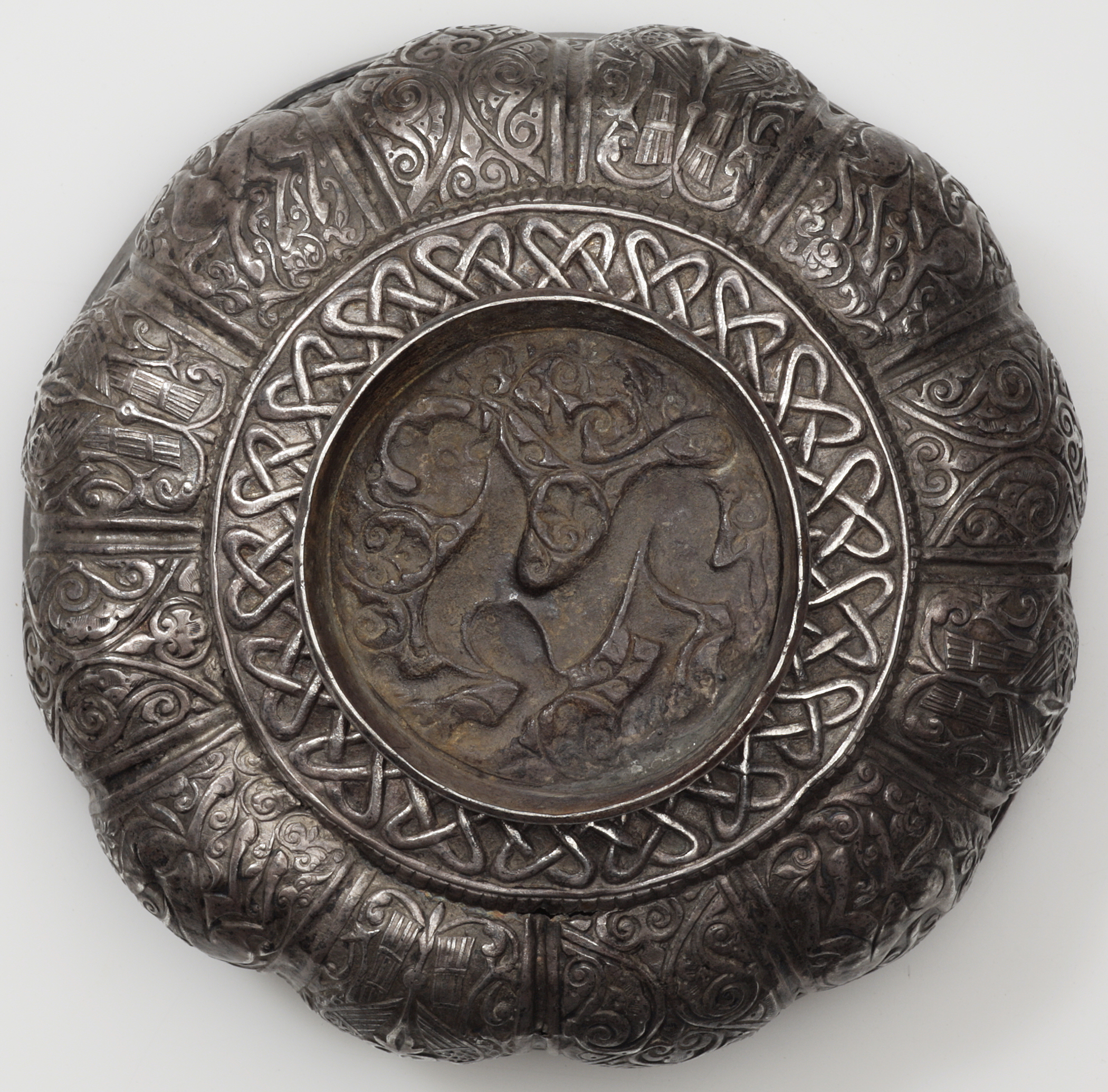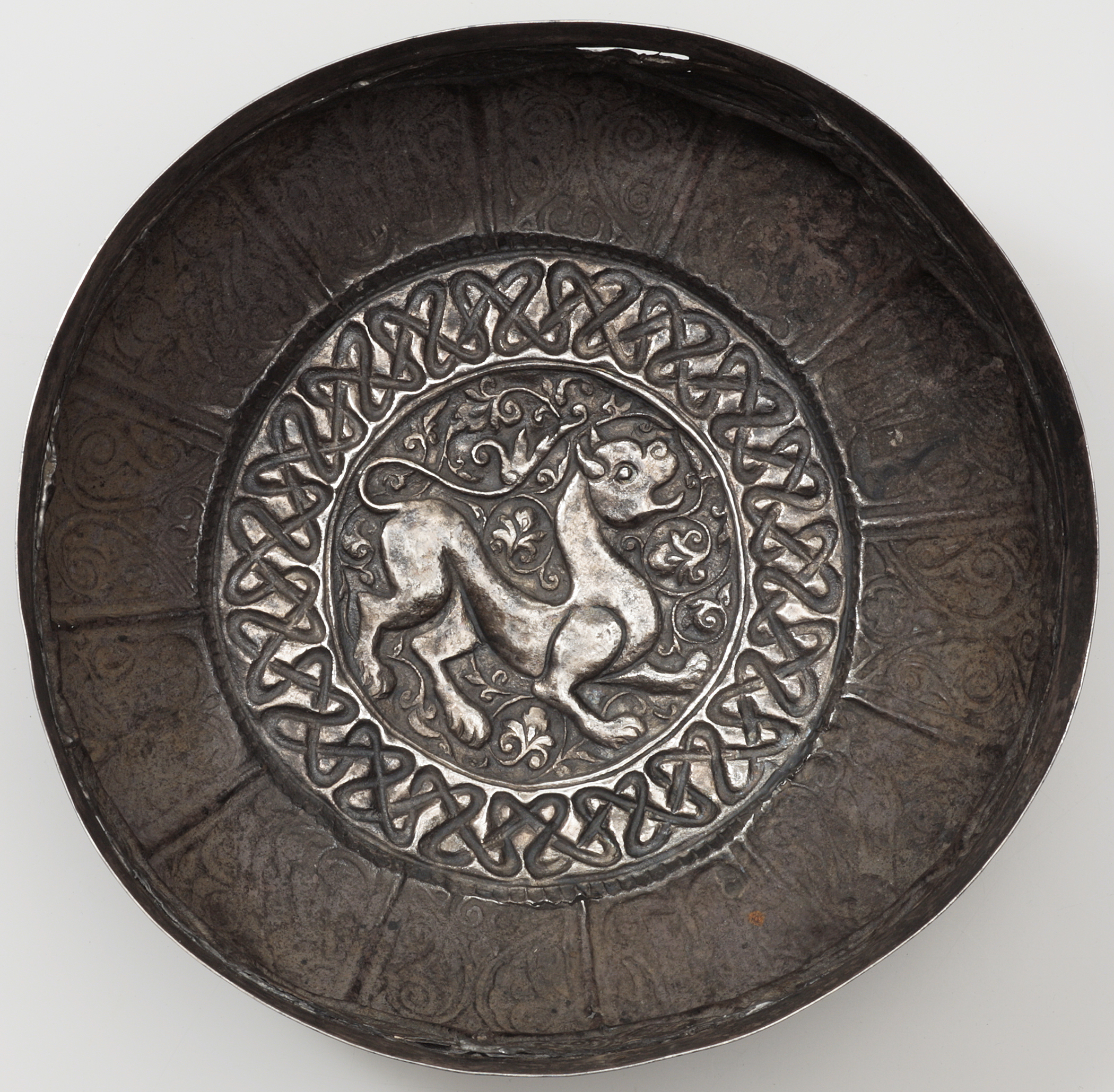 Print Page
Print Page
 Print Page
Print Page
Location: Anatolia or Cilician Armenia
Materials: silver sheet, beaten and worked in repoussé, with engraved surface decoration
Dimensions: 8.5 x 20cm
Accession Number: MTW 1313
Other Notes:
The outside surface is decorated with pairs of birds, long-eared hares and arabesque compositions, edged with lunettes with flying water birds. Inside, the only decorative element is a central roundel, with a lion and foliate sprays. The decorative repertoire is characteristic of silverwork produced in Byzantine court workshops following the expulsion of the Latin emperors from Constantinople in 1261, in the Christian and Muslim states on the Byzantine frontiers, especially in Cilician Armenia (south-eastern Turkey), and in the last decades of Crusader rule in Syria and Palestine.
Other bowls and footed dishes of similar manufacture show an even wider range of decorative motifs, which, because of the close links between silversmiths of different ethnic groups – Persians, Greeks, Armenians, Arabs and Syrians – tend to be related in style.
Bibliography:
J.M. Rogers, The Arts of Islam. Masterpieces from the Khalili Collection, London 2010, cat.116, p.104.


